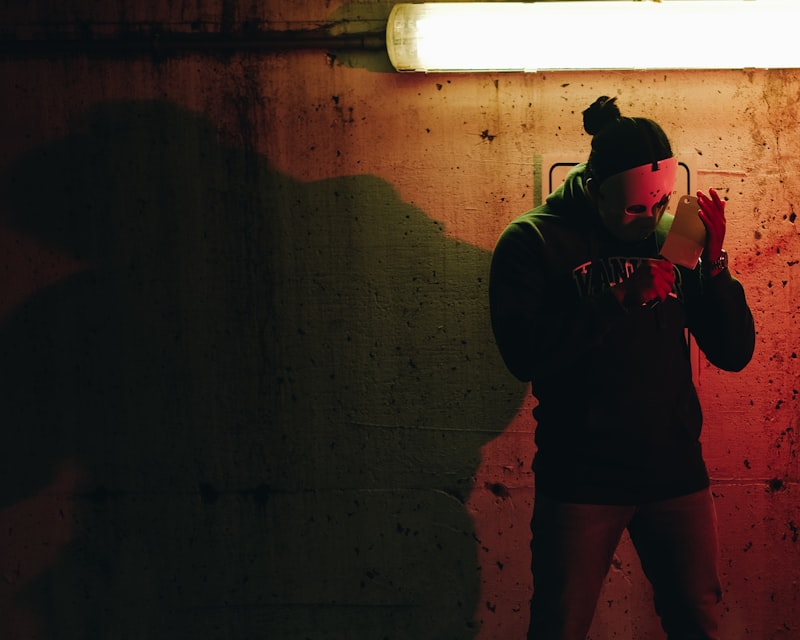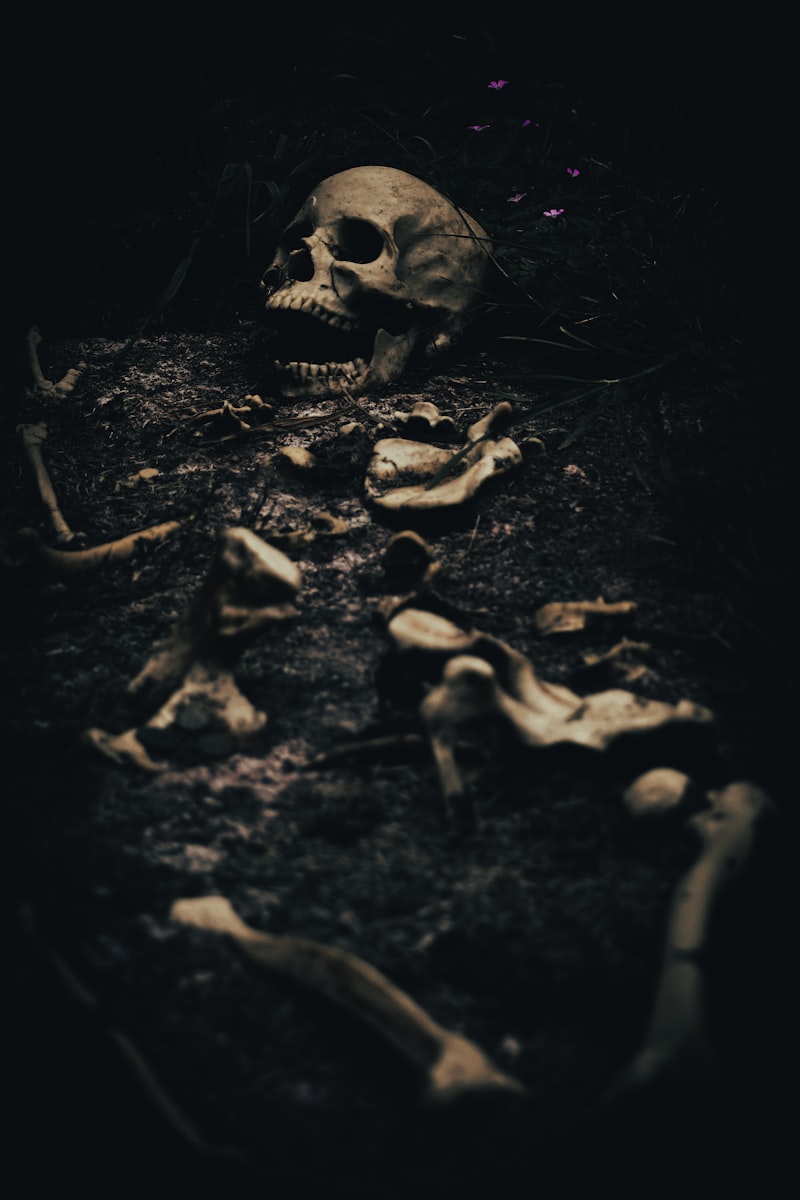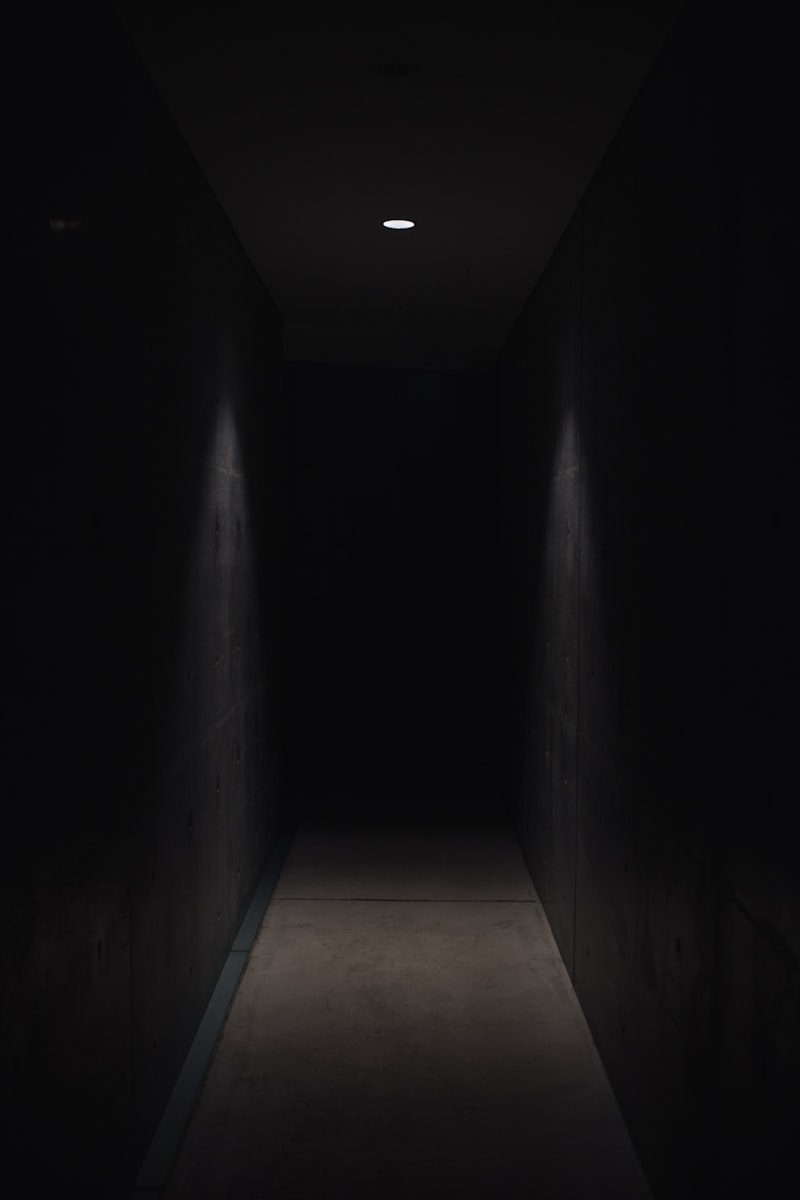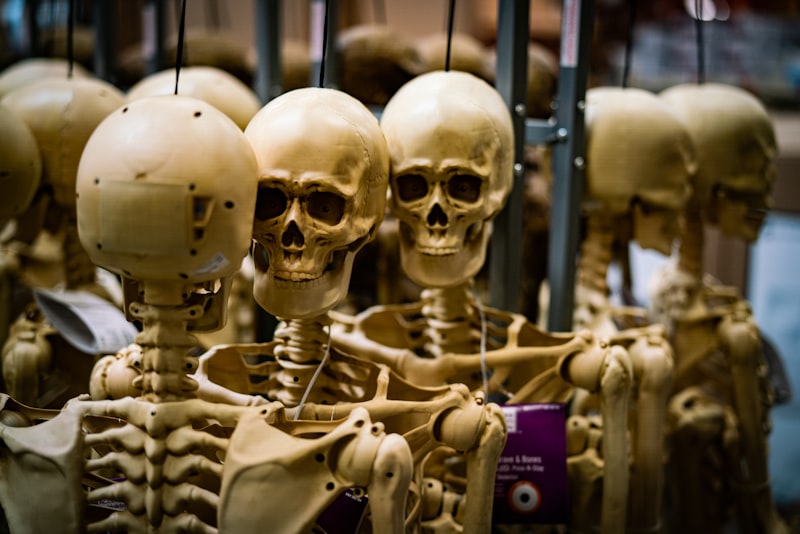One of the most effective techniques directors use is pacing. Just like a roller coaster, they know when to slowly climb that first hill, letting anticipation build with each click of the track. Every scene is crafted to heighten the sense of unease, drawing viewers deeper into the story until they can’t look away, even though they want to.
Think about the setting. A deserted mansion with creaky doors and long, dark hallways. Or a dense forest at night, where every rustle of leaves could be something lurking just out of sight. These environments become characters themselves, adding to the overall sense of foreboding.
And then there’s sound. A subtle whisper, a distant scream, or the low hum of something unseen. Sound design in horror films is crucial for setting the mood and manipulating emotions. It’s not just about what you see on screen; it’s about what you hear and how it makes you feel.
But perhaps the most powerful tool in creating tension is the unknown. Our minds are wired to fear what we can’t see or understand. So directors play with our expectations, hinting at something sinister without ever fully revealing it. It’s the shadowy figure at the end of the hallway, the unanswered phone ringing in the empty house, the footsteps approaching from behind when the character is all alone.
In the end, the art of creating tension in horror films is about mastering these techniques and using them to tap into our deepest fears and anxieties. It’s about taking us on a terrifying journey where we willingly suspend our disbelief and let ourselves be scared, knowing that when the lights come back on, it’s just a movie. But in those moments of suspense, it feels all too real.
Mastering the Macabre: Techniques Behind Building Nail-Biting Tension in Horror

Firstly, pacing is key. Just like a rollercoaster, a good horror story has ups and downs. It starts slow, drawing you into the seemingly normal lives of its characters. You begin to feel comfortable, perhaps even safe. But then, almost imperceptibly, things start to shift. A subtle hint here, a fleeting glimpse there—tiny cracks in the façade of normalcy. It’s the calm before the storm, where tension lurks beneath the surface, waiting to pounce.
Next, let’s talk about atmosphere. Imagine you’re in an old, abandoned mansion on a stormy night. The wind howls outside, rattling the windows like restless spirits. The air is thick with the scent of damp wood and decay. Every shadow seems to flicker and move on its own. This kind of setting isn’t just background—it’s a character in itself, heightening your senses and setting the stage for terror.
Character development plays a crucial role too. In horror, it’s not just about what you see, but who you meet along the way. Complex characters with fears, flaws, and desires that mirror our own draw us deeper into the narrative. When faced with the unknown, their reactions become our own, amplifying the fear factor and keeping us invested in their fates.
And let’s not forget suspense—the heartbeat of any good horror tale. It’s the anticipation of what’s lurking around the corner, the unknown that keeps us guessing. Will the protagonist open that door? What’s making that eerie sound in the basement? Suspense fuels our imagination, turning every page and every moment into a nerve-wracking journey.
Lastly, a masterful twist can elevate a good horror story into a spine-chilling masterpiece. Just when you think you’ve figured it out, the narrative takes a sharp turn, leaving you gasping for breath and reevaluating everything you thought you knew. It’s the unexpected revelation that lingers long after the final page is turned, haunting your thoughts and ensuring the story stays with you, long into the night.
Unveiling the Secrets: How Directors Craft Suspense in Terrifying Cinematic Worlds
Suspense in cinema is an art form, meticulously crafted through a myriad of techniques. One of the most powerful tools in a director’s arsenal is the art of pacing. Like a skilled storyteller, they control the rhythm of the narrative, slowing it down to intensify moments of uncertainty and speeding it up to heighten adrenaline-fueled sequences. This control over pacing keeps audiences guessing, never quite sure what will transpire next.
Another key aspect is the strategic use of cinematography and mise-en-scène. Directors employ lighting, camera angles, and set design to create an atmosphere dripping with tension. Dark shadows, claustrophobic spaces, and eerie silences all contribute to a palpable sense of unease, drawing viewers deeper into the suspenseful narrative.
Sound design also plays a pivotal role. From subtle whispers to spine-chilling scores, every sound is meticulously chosen to amplify emotions. The sudden creak of a floorboard or the faint echo of footsteps can send shivers down the spine, heightening the audience’s anticipation of impending doom.
Moreover, directors skillfully manipulate audience expectations. By subverting tropes and defying clichés, they keep viewers on their toes, never allowing them to predict the outcome with certainty. This unpredictability enhances the thrill of the viewing experience, leaving a lasting impact long after the credits roll.
From Silence to Shrieks: The Evolution of Tension-Building Techniques in Horror Movies
Imagine a dark, desolate hallway where each creaking floorboard amplifies your heartbeat. This is the power of silence in horror films—a deliberate absence of sound that heightens suspense. It’s the moment when the audience holds their breath, waiting for something sinister to emerge from the shadows. Alfred Hitchcock famously utilized this technique in “Psycho,” using quiet moments to build an almost unbearable tension before shocking the audience with sudden bursts of violence.
As horror evolved, so did the techniques to keep viewers on edge. Filmmakers began employing subtle, unsettling sounds—a faint whisper, a distant scream—that linger in the background, creeping into the subconscious. These auditory cues play with our primal fears, amplifying the sense of dread without revealing the source.
In more contemporary horror flicks, tension reaches its peak through visual and auditory bombardment. Jump scares, accompanied by loud, jarring noises, startle audiences out of their seats. It’s the equivalent of a sudden clap of thunder on a quiet night—a visceral reaction that bypasses rational thought and taps directly into our fight-or-flight instincts.
Metaphorically, tension in horror movies is like a coiled spring, slowly tightening until it snaps. It’s the slow drip of water echoing in an empty corridor, the flickering light that hints at unseen horrors lurking in the dark. Every scene, every frame is meticulously crafted to keep us on edge, creating an immersive experience where fear feels palpable and real.
From the haunting silence of classic horror to the heart-pounding crescendo of modern fright fests, the evolution of tension-building techniques mirrors our evolving fears and anxieties. It’s a testament to the power of storytelling—a reminder that in the realm of horror, what we don’t see or hear can be just as terrifying as what we do.
Psychological Chillers: The Subtle Tricks that Keep Audiences on the Edge of Their Seats
One of the key elements that psychological thrillers employ is suspenseful pacing. Unlike action-packed blockbusters, these films often build tension gradually, allowing suspense to simmer beneath the surface. This slow burn approach keeps viewers guessing, heightening their anticipation with every scene.

Character development plays a crucial role in psychological chillers. Protagonists are often complex individuals with layered personalities and hidden motivations. As viewers unravel the intricacies of these characters, they become emotionally invested in their fates, further amplifying the suspense and intrigue.
Another hallmark of psychological thrillers is the use of psychological manipulation. Filmmakers skillfully play with the audience’s perception, blurring the lines between reality and illusion. This manipulation not only challenges viewers to question what they see but also creates a sense of unease and paranoia, drawing them deeper into the narrative web.
Atmosphere and setting also contribute significantly to the chilling effect of these films. Dark, moody cinematography combined with eerie soundtracks creates a palpable sense of dread and foreboding. Every shadow and every sound becomes a potential threat, heightening the psychological tension and keeping viewers nervously glued to their seats.
Moreover, plot twists are a trademark of psychological thrillers. Unexpected revelations and shocking turns of events not only keep audiences surprised but also force them to reconsider everything they thought they knew about the story. These twists inject new layers of complexity into the narrative, ensuring that viewers remain engaged until the very last frame.
Beyond Jump Scares: The Delicate Balance of Fear and Anticipation in Scary Films
Imagine sitting in a darkened theater, heart pounding, as the music subtly shifts, hinting at something sinister lurking just out of sight. Your senses are heightened, every creak and whisper amplified as the tension mounts. This is the magic of anticipation in horror movies – the art of creating an atmosphere so thick with dread that you can almost taste it.
Fear in cinema isn’t just about monsters or masked killers. It’s about tapping into primal fears we all share: fear of the unknown, fear of darkness, fear of what might be lurking in the shadows. Directors and writers carefully weave these elements together, using pacing and storytelling to keep audiences on the edge of their seats.
Take a classic like Alfred Hitchcock’s “Psycho.” The infamous shower scene isn’t scary just because of the sudden appearance of the killer. It’s the buildup – the slow, deliberate pacing, the eerie silence punctuated by the screech of the violin, and then, in an instant, terror strikes. It’s a masterclass in how anticipation can heighten the impact of a scare.
Modern horror films continue to innovate, finding new ways to toy with our expectations. Films like “Hereditary” or “Get Out” delve into psychological horror, where the real terror lies not in what you see, but in what you feel. They play with your mind, planting seeds of unease that grow into full-blown dread.
Cinematic Dread: Anatomy of Fear-Inducing Moments in Horror Cinema

One of the fundamental tools in a horror filmmaker’s arsenal is suspense. It’s the gradual tightening of the narrative noose, leaving audiences on edge and anticipating the worst. Picture a character cautiously exploring a dark, abandoned house – every creak of the floorboards and flicker of a candle builds an atmosphere thick with tension. This slow burn primes viewers for the climactic release of fear.

Jump scares are another staple, akin to a sudden punch to the gut. They’re the unexpected jolt that catches both characters and viewers off guard. A quiet moment may suddenly erupt with a startling image or deafening sound, triggering an immediate, instinctive response. It’s this visceral reaction that underscores the effectiveness of jump scares in horror cinema – they bypass rational thought and tap directly into our primal fear instincts.
Visual composition plays a crucial role in crafting fear-inducing moments. Directors often employ low-light settings and unsettling camera angles to distort familiar spaces, transforming them into ominous landscapes ripe with potential horrors. The use of shadows and negative space can create a sense of lurking danger, where what remains unseen is as terrifying as what is revealed.
Sound design is equally pivotal. A haunting melody or a discordant noise can set nerves on edge, heightening the impact of each visual scare. The absence of sound can be just as unnerving, amplifying the isolation and vulnerability of characters trapped in their terrifying predicaments.
In essence, horror cinema is an intricate dance between anticipation and release, sight and sound, darkness and light. It’s about harnessing the collective fears of audiences and transforming them into an unforgettable cinematic experience that lingers long after the credits roll.
Frequently Asked Questions
How do filmmakers create a chilling atmosphere in horror films?
Learn how filmmakers craft chilling atmospheres in horror films through techniques like lighting, sound design, cinematography, and narrative pacing to evoke fear and suspense effectively.
How do directors use camera angles and lighting to evoke fear in audiences?
Discover how directors strategically employ camera angles and lighting to evoke fear in audiences. Learn how subtle changes in perspective and shadows create suspense and heighten emotional tension in films.
What techniques are used to build suspense in horror movies?
Discover how suspense is crafted in horror films with techniques like eerie soundtracks, strategic lighting, and suspenseful pacing to keep audiences on the edge of their seats.
What role does music and sound play in building tension in horror films?
Explore how music and sound contribute to creating suspense and fear in horror films. Learn about the techniques filmmakers use to manipulate emotions and enhance the audience’s experience through auditory cues.
Why is pacing crucial for generating fear in horror movies?
Pacing is crucial in horror movies to build suspense and tension gradually. By controlling the rhythm of events, filmmakers manipulate audience emotions, creating anticipation and fear. Well-paced scenes allow for effective buildup of fear, leading to more impactful and memorable horror experiences.


